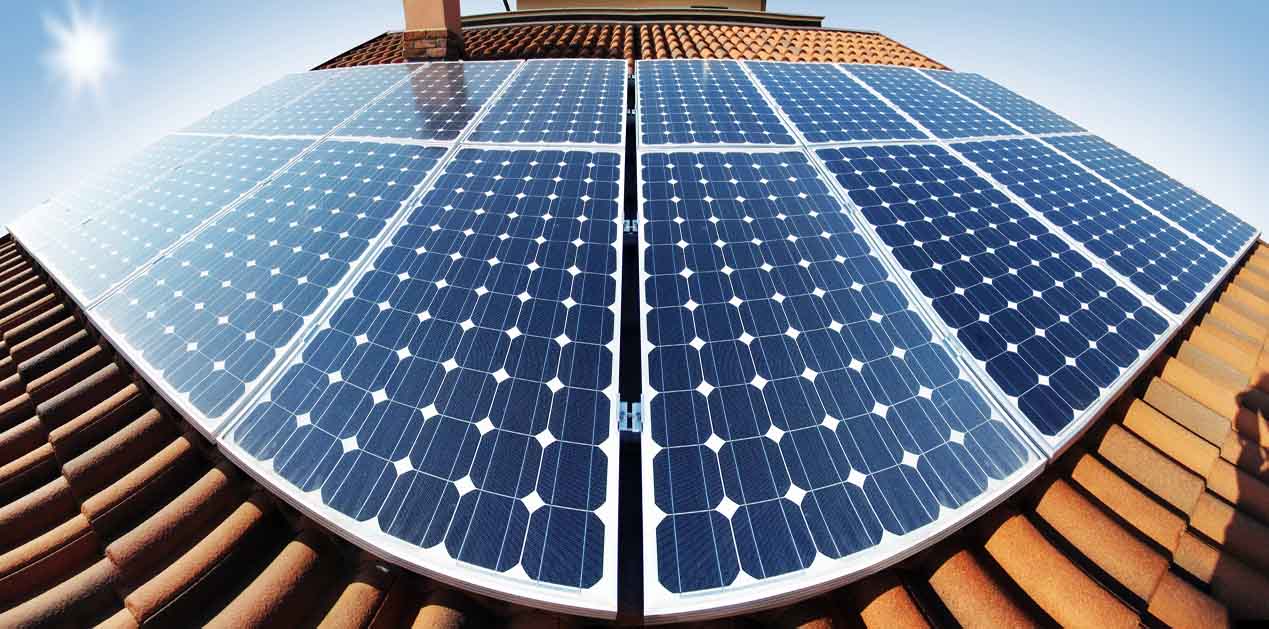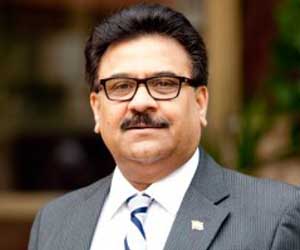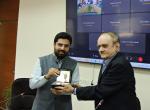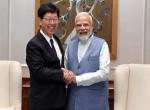On March 11 ,2018 India led the world into a new era of mutually beneficial multilateral effort, so necessary for the survival of the humanity, through the inauguration of the International Solar Alliance (ISA) in New Delhi by Prime Minister Narendra Modi and French President Emmanuel Macron, along with over 20 other Heads of States and Governments. ISA is perhaps the first major multilateral initiative by India since the Non-Alignment Movement in the 1950’s. This is an effort with a difference that it has become a North-South collaborative paradigm in the wake of adverse climate change that threatens the very existence of the human race. When the Climate Change Treaty itself was under threat with President Trump announcing the withdrawal of USA - one of the major polluters as such - USA did become a part of the ISA and lauded the efforts of the Indian leader.
Although India had launched its Solar Mission in 2010, it was only on November 30 , 2015 that India and France embarked on the ISA initiative with the Paris Declaration that ,i>inter alia resolved, “ Recognising that sustainable development and universal energy access and energy security are critical to the shared prosperity of our planet , we do hereby declare our intention to support India’s proposal to launch an ISA as a common platform for cooperation among solar resource rich countries lying fully or partially between the Tropics of Cancer and Capricorn”.
ISA has the distinction of having 121 sun rich members of whom more than sixty one have already signed and 32 have even ratified it. Australia, Bangladesh, Cuba, France, Ghana, India, Papua New Guinea, Sudan, Sri Lanka, Togo, the United Arab Emirates and Venezuela are among those that have ratified the agreement. The ISA was accorded a status of a multi-lateral treaty by the UN which came into force on December 6, last year. It does recognise the challenge for which all member countries have to act in a coordinated manner so that the financing requirements as well as that of technology transfer and capacity building flow unencumbered and affordable solar energy could reach for all. With the establishment of its headquarters in Gurgaon, India, and focussed approach, the projects will move with the requisite speed to achieve the desired objectives.
In order to bring the clean and affordable energy for all, the ISA will need an estimated US$ 1000 bn until 2030 to reduce the cost of finance and relevant technologies – a huge task indeed, but the vision is exemplary. President Macron announced a provision of an additional Euro 700 mn for financing the objectives of the Alliance. India has also allocated nearly US$ 2 bn for funding the solar projects from its Africa Fund for development, for which already several projects have been cleared or are in the pipeline. Providing a way out with his 10 point plan at the founding conference of ISA, PM Modi recalled India’s age old conviction stating, “Vedas consider the Sun as the soul of the world, it has been considered as a life nurturer. Today, to combat climate change, we need to look at this ancient idea to find a way”.
Prime Minister Modi, in his inaugural address announced India's commitment to extend nearly US$ 1.4 billion worth of lines of credit which will cover 27 projects in 15 countries. This initiative has been widely welcomed by the ISA founding States and the beneficiary countries. This is indeed one of the largest commitment to financing solar energy projects around the world. The projects in these 15 countries will include setting up of solar photo-voltaic power plants, mini-grid and off-grid usage, irrigation, rural electrification, street lighting, solar power for urban infrastructure including for health, hospitals, colleges, schools, government establishments, low income families etc. Governor General of Australia lauded the ISA as India’s gift to the world.
The PM underlined that the way forward to harness the renewable energy included making solar technology affordable to all nations, raising the share of electricity generated from photo-voltaic cells in the energy mix, framing regulations and standards, consultancy support for bankable solar projects and creating a network of centres for excellence. As a demonstration of India's commitment to ISA, Modi said that 500 training slots will be created for member countries and a solar technology mission will be started to lead R&D in the sector.
India has been diversifying its own energy sources from fossil fuels. It is increasing the share of renewal energy significantly and plans to produce 175 GW, of which 100 GW will be from the solar energy by 2022. Already during 2017 India had crossed 20 GW of solar energy production which is the highest growth in the world in this sector, almost 140 percent. Renewable energy capacity in India increased from 39 GW to 63 GW during the last two years. In order to effectively use energy saving devices and to supplement solar energy generation, India has distributed 28 crore LED bulbs in the last three years which have helped save USD 2 billion and 4 GW of electricity, according to PM Modi. However, there are certain limitations and constraints that need to be overcome by a dynamic policy framework which should address the legitimate interests of manufacturers, producers and consumers.
As a result of competition, higher production and low input costs, the solar energy price has dipped to a fairly low level in comparison to traditional sources. The manufacturers and producers are concerned due to recent imposition of 5 percent tax apart from enhanced duties on imported photo-voltaic cells and panels. In addition to cost competitiveness, high transmission and distribution losses, focus of manufactures of photo-voltaic cells being on export markets rather than local ones, availability of land, complex subsidy structure, storage batteries, multiple government agencies, financing, technology etc., pose significant constraints on achieving solar power generation at the real and desired scale. These need to be dealt with on priority in a concerted and integrated manner. It would be useful to ensure strategic collaborations with Lithium rich nations like Chile, Bolivia, Argentina and Australia etc. for storage battery requirements in the future. In addition, at this stage it will be relevant to take into account possible financing risks and fund availability, especially, in due course, the solar non-performing assets, which also may have socio-political repercussions.
India is also faced with external constraints and disputes from solar panel producing countries. In 2013, USA complained to the World Trade Organisation (WTO) that India’s solar programme created an unfair advantage and barriers against the import of US made solar panels through its domestic content requirement in violation of its treaty obligations under global trading rules. WTO had given US a favourable ruling. It is another matter that under President Trump, US has adopted one of the most stringent and protectionist trading regimes. However, we do and will have to depend on the FDI and latest technologies to achieve economy of scale our “Make in India”, and consequently, our solar programme will have to align with the reality of international trade and investment to stay attractive and competitive.
As President Macron told PM Modi, “Mr Prime Minister you made a dream and we did it”. Truly, the iconic India-trained Solar Mamas rendered the resolve in their soulful “We shall Overcome”, that will radiate the ISA with India’s leadership and commitment. At the end of day, when energy is the basic ingredient for any sustainable development, it is the mother nature that might salvage the humanity from its self-destructive course. India through the arduous Climate Change negotiations, or for that matter in General Agreement on Tariffs and Trade (GATT) and WTO deliberations, has always fought to protect the interests and concerns of the developing world. India is committed to play that part and lead it from the front.
(Anil Trigunayat is the former Ambassador of India to Jordan, Libya and Malta)
(Views expressed are of the author and do not necessarily reflect the views of the VIF)
Image Source: http://www.mbaaspirants.in/india-host-first-international-solar-alliance-summit/










Post new comment